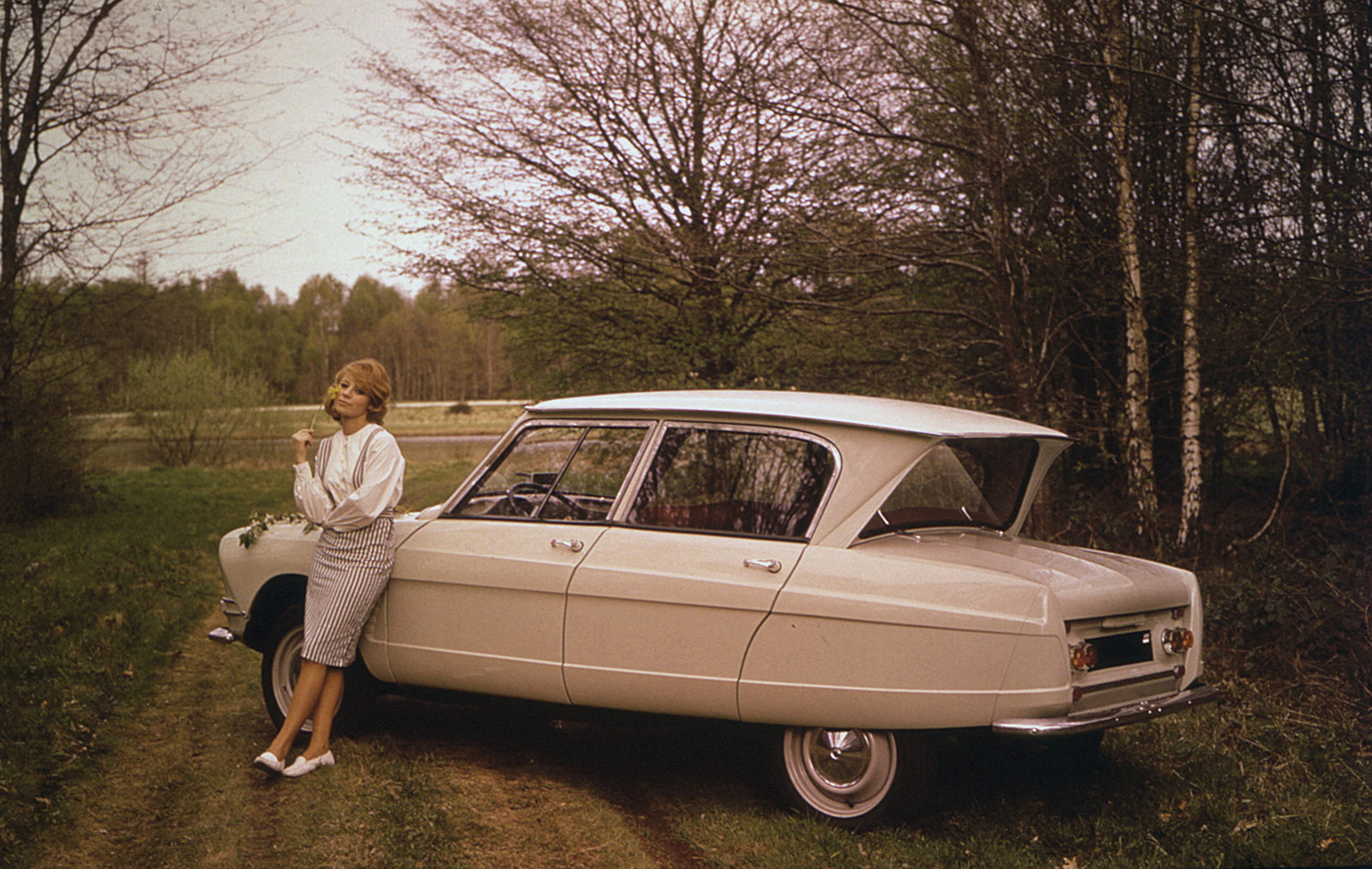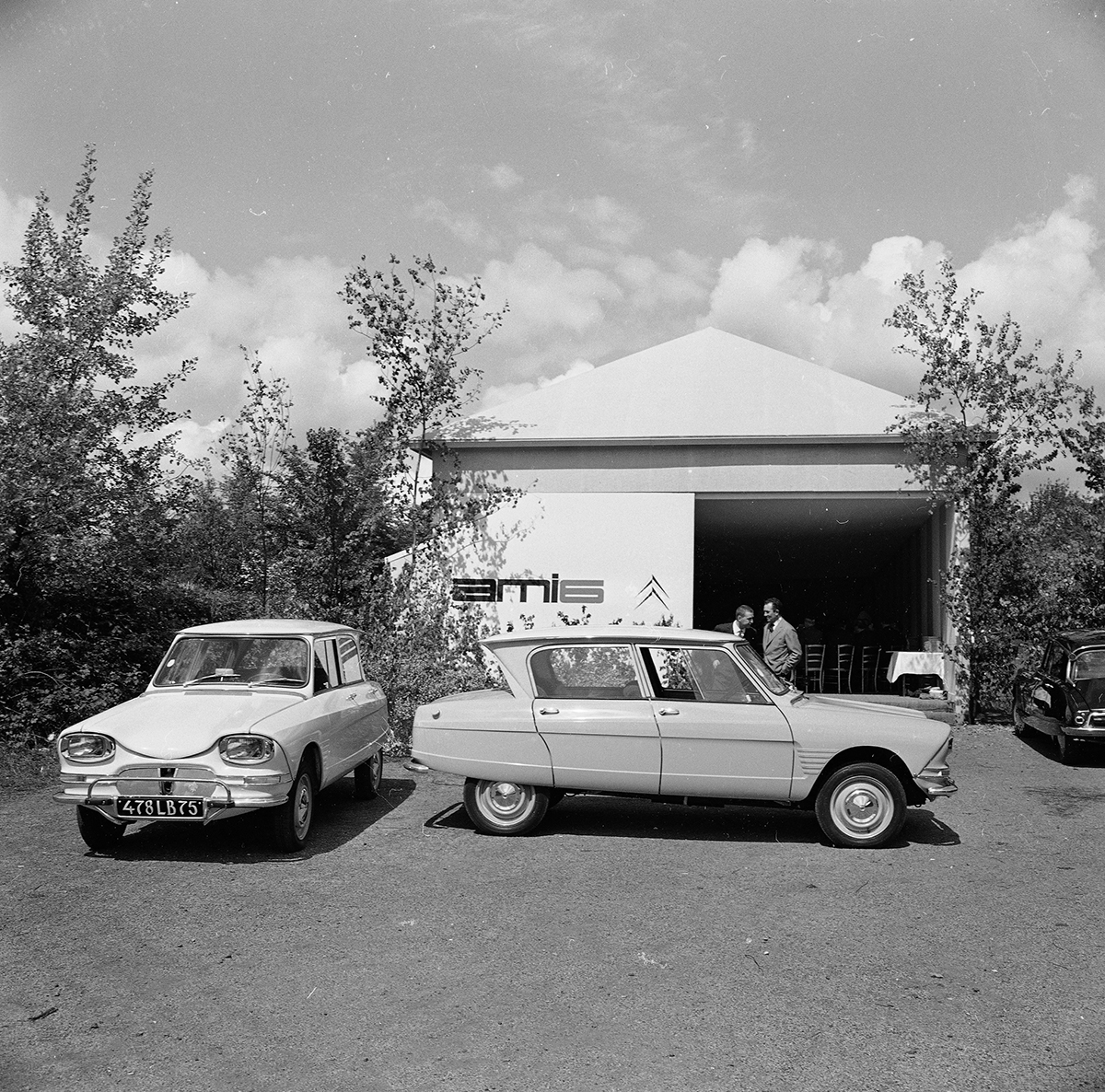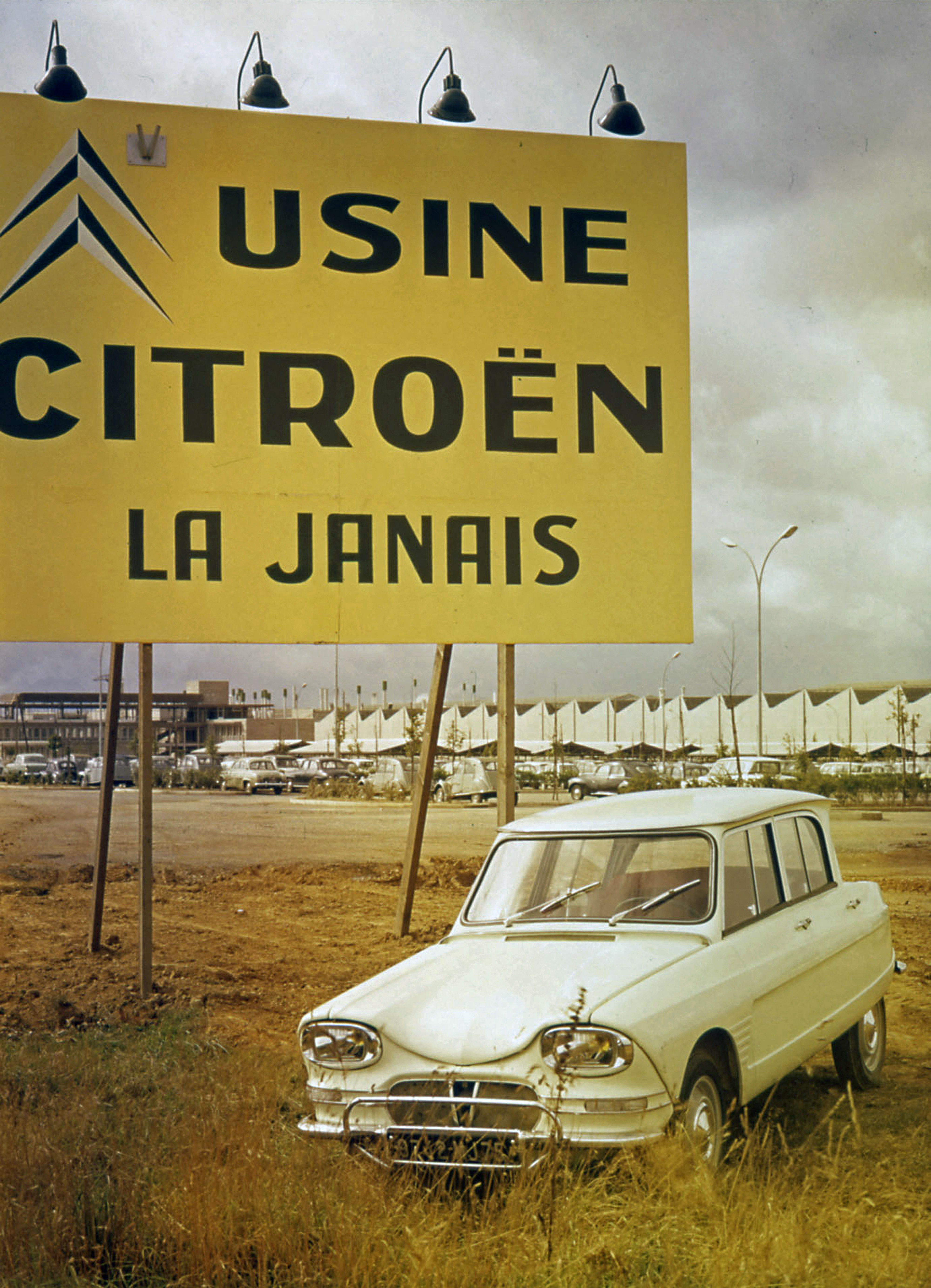Citroen Ami6, a girlfriend de caractère

With fancy and audacious aesthetics in full Citroen spirit, the model marked an era of French lifestyle
After penning Traction Avant, 2CV and DS, the Italian designer Flaminio Bertoni was asked to lend his talent to the style of a middle-range car, known as ‘AM Project’. The AMI 6 was the end result, with a name that comes from a phonetic combination of the design project (AM vehicle), the title “Miss” and the Italian word for friend, “amici”. First revelead in 1961, it inaugurated the Citroën plant in Rennes-La-Janais on September 10th, 1960. The factory was still under construction at the time and it was a little over a year before production began on the site.


Compact but spacious. The vehicle went on to be a great success for the brand with over one million examples sold, half of which were the capacious estate version launched in 1964. The new AMI 6 completed Citroën’s vehicle line up, joining the iconic 2CV, ID and DS models. It presented a shape and style that many perceived as surprising in the automotive sector at the time. The original design was 3.87m long and 1.52m wide, which later evolved to include rear sliding windows (from 1962), and an enhanced Club trim (from 1967).



Sheltered from the rain. For AMI 6, Bertoni had the bold idea of inverting the rear window, meaning that it would remain clear when it rained. It also allowed for a well-proportioned boot with a traditional boot lid. The design also boasted spacious rear seats, whilst retaining compact dimensions. AMI 6 had a dual-cylinder 602cc engine, capable of 22hp at 4,500 rpm, the same as seen in the 2CV. In a first at the time, the car also had large rectangular headlights at the front. The model displayed a strong character, with a sloping bonnet, the pagoda-style roof and panels highlighted with clearly embossed lines – some onlookers even described the car as being in a “baroque style”.

Like in a stylish sofa. The interior of AMI 6 was inspired directly by the stunning one of the DS, which was the gold standard at the time. From its single-spoke steering wheel and stylish door handles, to its dashboard controls and seats, the model was a top-of-the-range Citroën. The on-road handling and compliant ride – inherited from the famous suspension setup of the 2CV – was received positively by customers and the press. The turning point for the model came in late 1964, with the arrival of a small estate version with a 320kg payload that was designed by Flaminio Bertoni’s assistant, Henri Dargent, as well as Robert Opron, who would become Bertoni’s successor after he passed away in 1964. The estate version would go on to boost sales and overtake the saloon in terms of popularity, something that has rarely happened in automotive history.

A 4 season’s car. The design of the estate version offered a great amount of space for a leisure vehicle in this category, along with easy and convenient accessibility. It was a versatile model, providing just as much comfort to a family travelling on a trip, as it would for a professional using the car for business needs. In 1966, AMI 6 was named in France as the nation’s favourite car of the year. The saloon’s life ended in 1969, six months before production of the estate ended. The model made way for the new AMI 8 that featured a more conventional rear design. Eventually AMI 8 handed the baton on to Citroën Visa in 1978.
© UNAUTHORIZED REPRODUCTION FORBIDDEN

